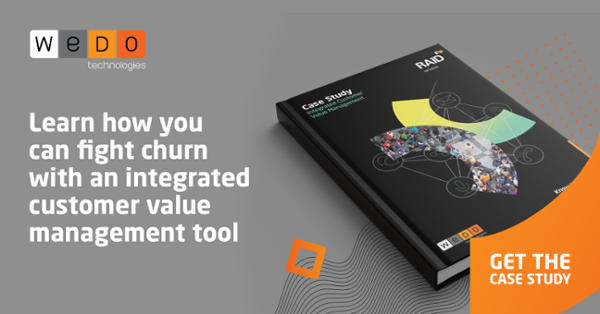It’s not easy to find definitions for Customer Value Management (CVM), although whatever the definition, the objective is the same: to maximise the value of the customer through their lifecycle. But how do you do it? By increasing the price of products? Increasing the number of products or services that a customer has?
Increasing customer usage of the service? While the answer is obviously yes to all them, the problem lies in identifying the methods needed to achieve the required results. A number of organisations believe that a “magic set of steps” are necessary, while many base their methods on trial and error. Some simply opt to increase their prices on a bi-annual or yearly basis, and others bombard their entire customer base with details of every single product or service they produce.
This latter approach undoubtedly seems to be commonplace, with a large number of businesses inundating their customers with content and offers that in no way relate to their preferences. But does this approach actually work? With copious amounts of email offers being incredibly time-consuming to look through, many consumers ignore or delete these unwanted messages, making it a highly ineffective strategy for increasing CVM.
Get to know your customers
Instead of sending impersonalised, blanket messages to customers, it’s therefore vital that CSPs recognise that the key to customer satisfaction lies in providing personalised, targeted offers and services. To deliver this, it’s important that they get to know their customers and address the following questions:
- Which customers do I want to keep?
- How much am I willing to spend to keep them?
- Who are my customers?
- What are their preferences?
- What is their service usage behavior?
- What product fits each customer?
- Who are the customers that are going to leave for the competition?
- What’s the right way to retain each customer?
While some CSPs have huge amounts of customer data available to answer all of these questions, many have it but don’t take advantage of it. This represents a wasted opportunity to identify their best customers and to proactively further these relationships, while still winning new customers.
Once CSPs have addressed the questions above and identified the customers they want to keep, it is vital that they then build a detailed understanding of each person; their profile, behavior and preferences. Information like where they live and work, how they use their data, which sites they frequently visit, if they buy online or not, who’s in their contact network, what are their hobbies, etc. can be key in supporting successful CVM strategies. This data is incredibly easy to collect and enables CSPs to send the right information to the right customers. In addition, it is also essential for successful 1-1 marketing campaigns, where the customers determine which offers or information they want to receive.
Combining the right data ingredients for the best results
In Portugal we love codfish; we even have a saying where we claim to have more than 1000 recipes for codfish. Achieving different results (that people love) based on these recipes can be achieved by looking at how we combine the different ingredients available. Campaigns based on data analytics rely on a similar methodology to cooking the perfect dish. When you have more than 1000 metrics related to each customer, you can get a lot of insight by just changing the correlation on one or two metrics in your insight focus. Results can include finding new customer niches, new offers and new ways to increase the value of your customers and their engagement.
With customer experience such a high priority for many operators, it has never been more important to know your customer in order to develop new services that address an increasing number of industry challenges across multiple sectors. As a result, it is critical that CSPs strengthen their CVM strategies to maximise the value of the customer by providing personalised and targeted offers while determining the profitability of customers, plans and services. Consequently, the secret to increasing customer loyalty and satisfaction is in how you extract value from these “ingredients”!




Let Us Know What You Thought about this Post.
Put your Comment Below.